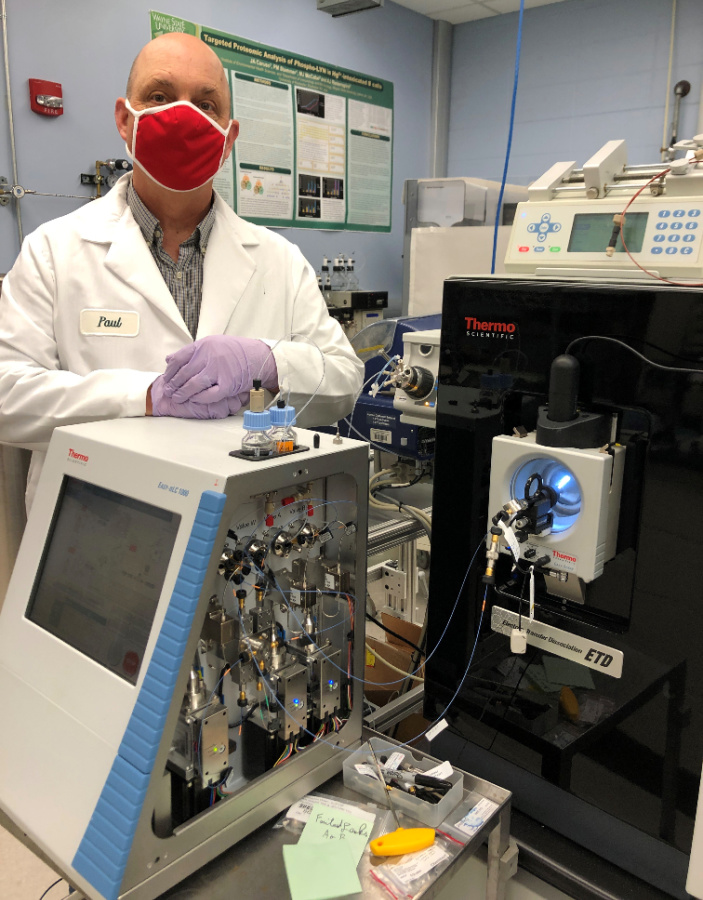When communities have been faced with environmental concerns over the last several years, such as storage of pet coke along the Detroit River, blue-green algae on Lake Erie, elevated levels of lead in Flint drinking water and exposure to PFAS, they have repeatedly turned to Wayne State’s Center for Urban Responses to Environmental Stressors (CURES) for answers.
Since 2014, CURES faculty and community partners have worked together to apply cutting-edge research and technology to understand how such human exposures to chemical and nonchemical stressors in the urban environment can influence the development of environmentally linked disease.
When a CURES faculty member takes an interest in an environmental concern, the first step is to measure the exposure. That’s where CURES’ Exposure Signature Facility Core (ESFC) comes in. ESFC, a consortium of six labs, is the analytical arm of CURES. It measures toxicants in samples from the environment and the biological consequences of exposure to the toxicant for people.
The Lumigen Instrument Core, directed by ESFC co-leader Judy Westrick, often provides the first measurement.

“You can’t look at toxicants if you can’t measure them, so it’s really enabling to have that resource here and the people Judy has put together as a team to be able to look at things that become a community concern and then become a research interest of the faculty — it’s a paradigm that works quite well,” said Paul Stemmer, director of the Proteomics Core Facility and professor in the Institute of Environmental Health Sciences (IEHS).
Once the true nature of an exposure has been evaluated, the other ESFC co-leaders, Stemmer and Doug Ruden, professor and director of Epigenomics in the IEHS, and their teams analyze large data sets using high-performance omics — most frequently epigenomics, transcriptomics, and proteomics — to determine the body’s response to the environmental toxins.
ESFC focuses on analyzing blood, plasma and urine, but it can work with any biological or environmental sample.
The ESFC team is available to consult with investigators when they are planning a project to explain the full scope and power of the services and technologies available. The ESFC can also offer advice regarding analytical end points they might want to consider, how those end points could be achieved experimentally, and the cost involved in doing that work.
The ESFC is available to CURES’ 51 full members, as well as its 13 associate members who are part of CURES’ Pilot Project Program.
“The CURES Exposure Signatures Facility Core makes it possible for our researchers to study and understand the ‘real world’ burden of urban environmental chemical and nonchemical stressors that contaminate our built environment, our air, water and soil quality, and adversely influence the health and well-being of our urban community,” said Melissa Runge-Morris, director of the CURES Center and IEHS.
That is something the CURES team hopes to do for years to come.
Last week, Runge-Morris submitted an application for a grant renewal to keep CURES as one of a few select environmental health sciences core centers in the nation.
CURES is funded by the National Institute of Environmental Health Sciences (NIEHS). The new grant proposal is for five years, beginning in 2022.
